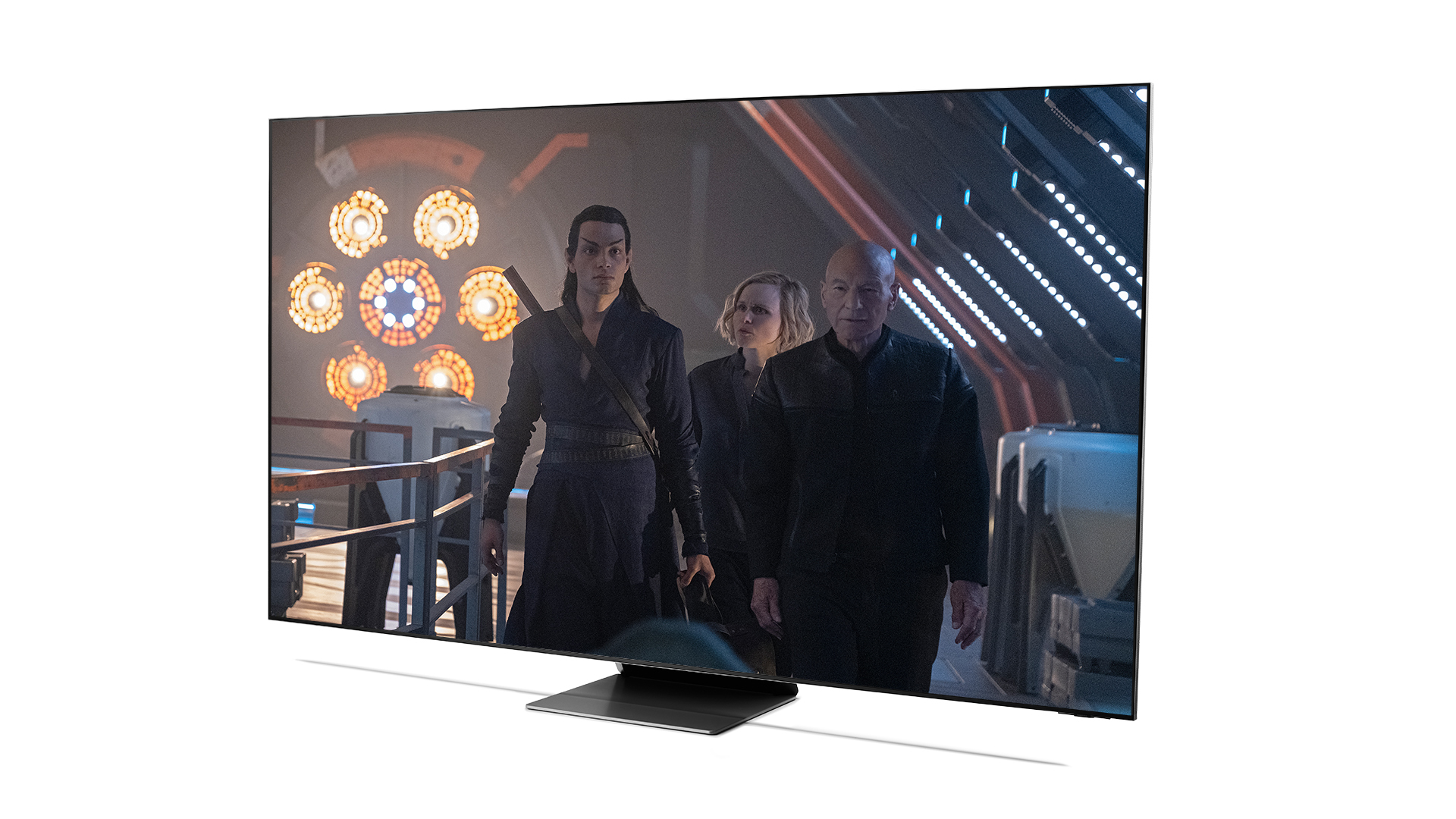What Hi-Fi? Verdict
This 8K TV has an awesome sense of scale and a crispness normally associated with a smaller 4K set. The next class of big screen entertainment has graduated.
Pros
- +
Great build
- +
Feature-rich and smart
- +
Superb shading and contrast
- +
Excellent scaling abilities
Cons
- -
No Dolby Vision
Why you can trust What Hi-Fi?
Chocolate and peanut butter, beer and crisps, sleep and Sundays – some things are perfect partners, whether they were designed that way or not. Samsung’s 8K boffins might not be the same people as those in charge of Mini LED, but together they have managed to create one serious winning combination in the Samsung QE75QN900A 8K TV.
The Samsung QE75QN900A is a 75in version of Samsung’s third generation of 8K TVs, but the first to be backed by a Mini LED lighting system rather than the standard LED set-up. As the name suggests, Mini LEDs are much smaller than standard LEDs, the size of glitter in your hand, and numbering in the thousands, rather than the hundreds, on your TV panel.
Of course, this upgrade is about more than just miniaturisation. More LEDs offer the potential for more granular backlight control – just the ticket for increasing the contrast and complexity of every onscreen moment. Combine that with the greater pixel density that 8K offers and this could be one seriously sharp, punchy and yet incredibly natural-looking TV.
Pricing
At the time of writing, the Samsung QE75QN900A is priced £6999 ($6000, AU$9499) but even this early in its lifecycle, there have been some significant price drops. The 85in version of the Samsung QN900A costs £10,999 ($9000, AU$12,499), while the smaller 65in Samsung QE65QN900A is priced £5299 ($4899, AU$6799).
Build
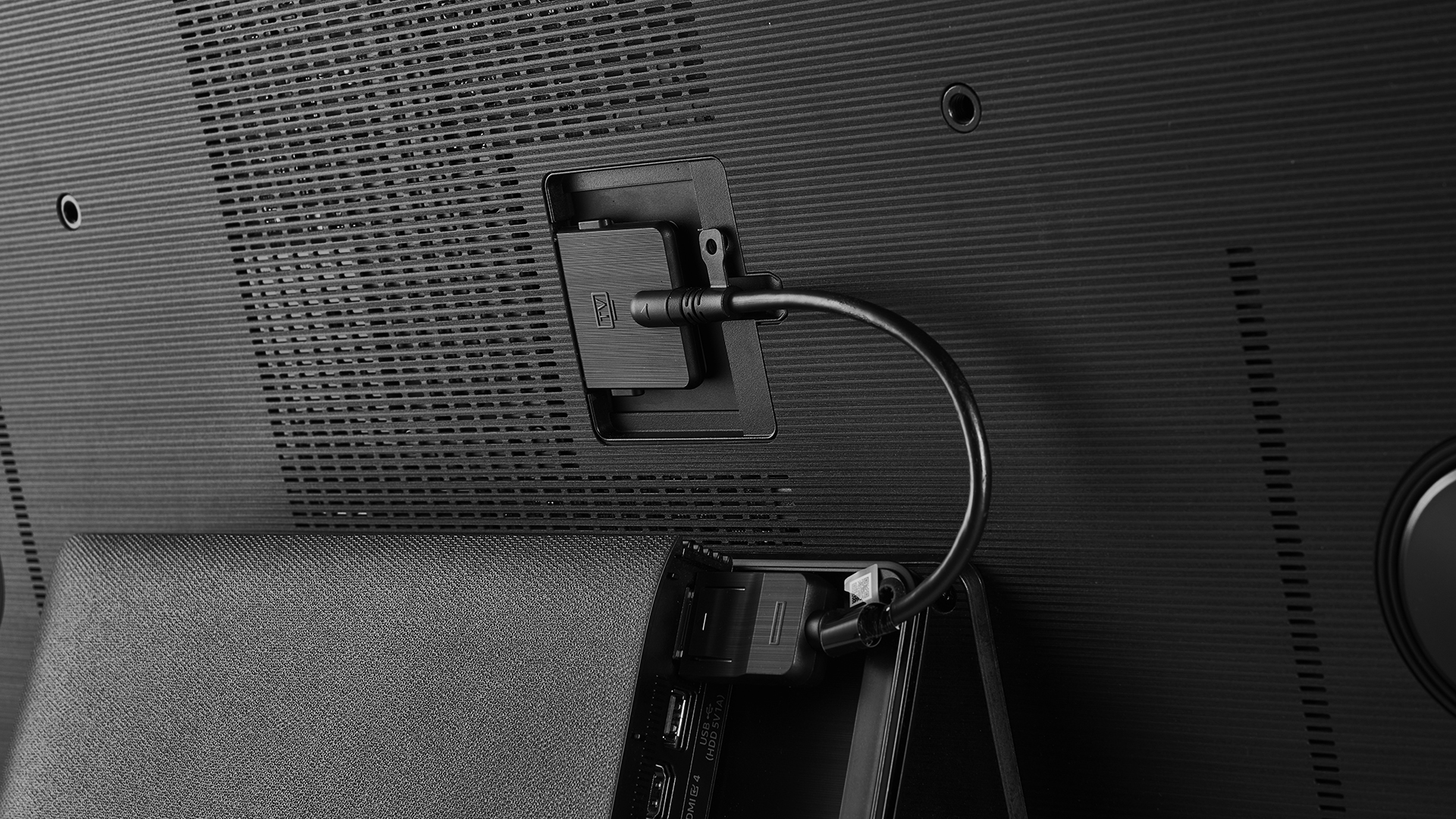
The Samsung QE75QN900A follows the same design as last year’s Samsung 8K TVs. The Infinity Screen brings an impressive edge-to-edge glass pane, wrapped in a classy looking metallic matrix rim. The 0.8mm bezel means the picture goes all the way up to the edge with virtually no black buffer – it’s like the whole TV is picture from edge to edge.
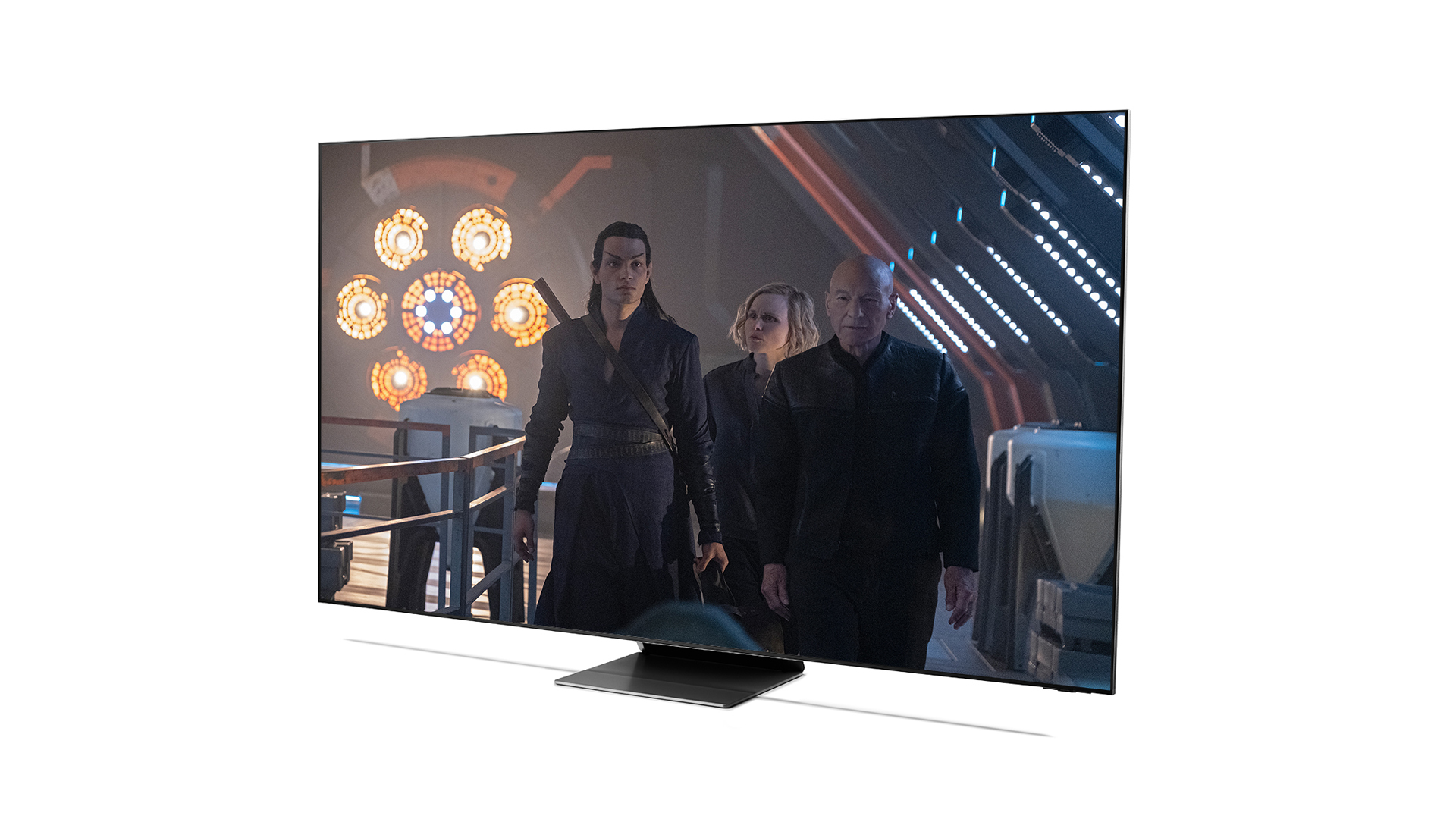
Display type Neo QLED, 8K HDR (HDR10, HDR10+, HLG)
Sound system 6.2.2ch, 80W
One Connect Yes
4K@120Hz Yes
HDMI 2.1 sockets x4
Dimensions (hwd) 102 x 165 x 32cm (with stand)
Weight 41kg (with stand)
Samsung has adopted the infinity name to describe the thickness of this 8K Neo QLED TV. It’s the same 16mm thickness all round, with no protrusions on the rear whatsoever. That’s both rare and remarkably pleasing to the eye. Should you choose to wall-mount (a frame is included in the box), there won’t be an issue with any unsightly side views. This so-called Infinity One Design means it looks great from all angles, on which subject, Samsung has ditched the slight three-degree backward lean of the outgoing Q950TS.
The brilliant One Connect box is included with this TV, meaning you’ll only need one small cable running between the TV and the box with all of your HDMIs and other cables running into the One Connect instead. This year’s One Connect has been flattened out and can now be neatly mounted onto the rear of the QE75QN900A’s C-shaped, single plinth metal stand.
However, it’s on the inside where you’ll find the real changes. This is Samsung’s first Neo QLED 8K TV, combining that tighter-packed collection of LEDs and pixels. The tiny LEDs are grouped into thousands of dimming zones to create a carefully controllable 4000 nit screen that supplies over 33 million pixels with as much shading and contrast care as Samsung can muster.
Conducting this light orchestra is the Neo Quantum Processor 8K, which uses what Samsung calls ‘Deep Learning’ and multiple ‘Neural Networks’, as well as image databases and other picture algorithms, for what the company claims is its best object recognition. There’s also upgraded sharpening and detail retrieval processes, which will be key to the TV’s performance, given that the paucity of 8K content means most source material will have to be upscaled to fill the screen.
Another small but significant upgrade to this year’s top Samsung 8K TV is the Solar One Remote. This has gone black from silver and there are no removable battery options, it can now be charged by solar power as well as a USB-C port on its bottom edge. You’ll need to pop the remote on your window sill or certainly near some genuine daylight to passively recharge. It doesn’t pick up much juice from the dimmed lighting in our AV room, but the battery certainly lasts a long time.
Features
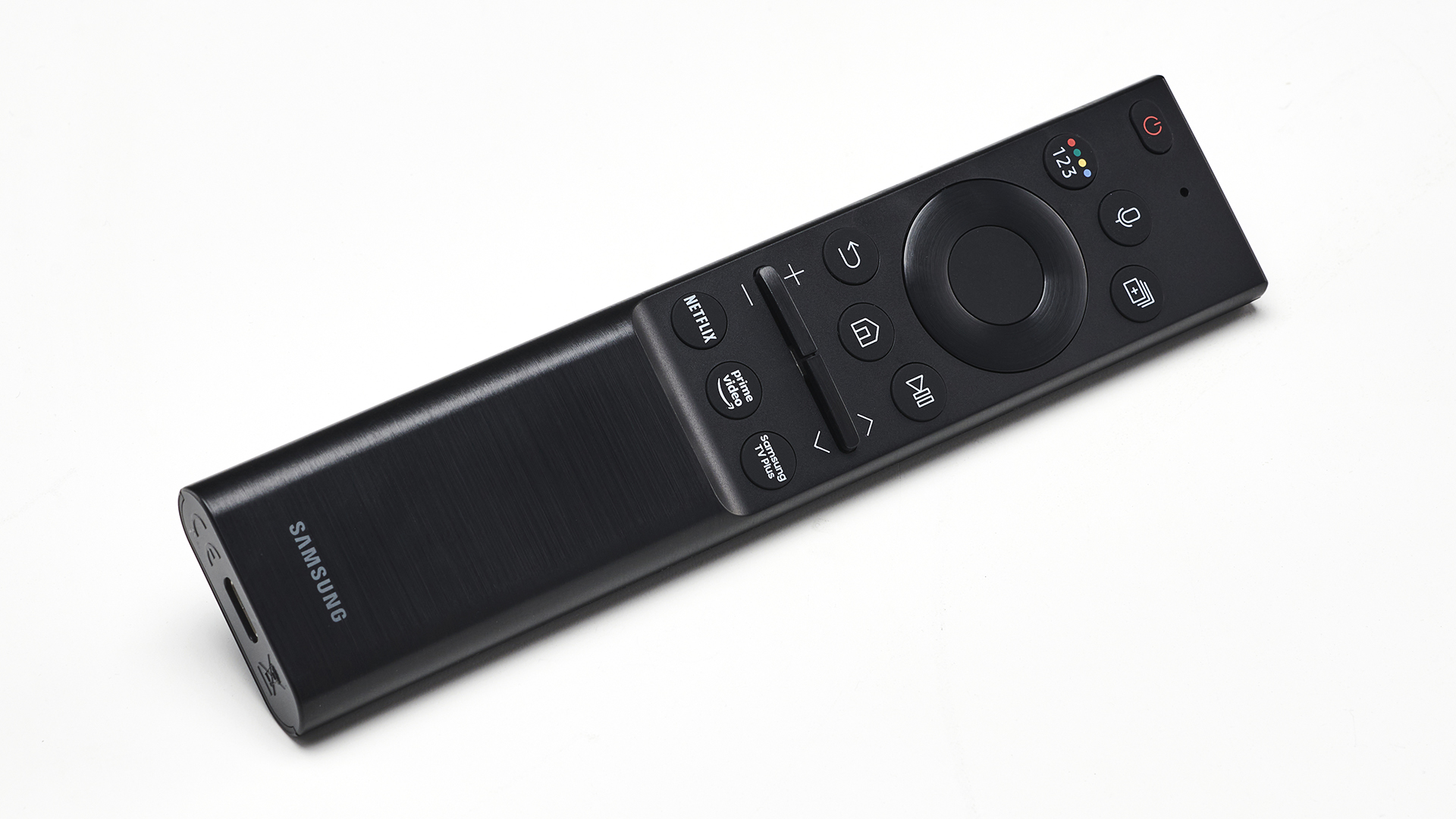
Samsung has one of the best TV operating systems in Tizen and as such, it only needs to make minor tweaks each year. Google Duo has arrived for video calls and there’s now a Smart Trainer app to go with Samsung Health platform to give you feedback on your home workout sessions.
Along with a choice of three smart voice assistants (Bixby, Google Assistant and Alexa) and the Samsung SmartThings platform which connects the QN900A to all the rest of your compatible smart devices, that makes for quite the connected experience.
However, we enjoy the Multi-View feature even more. Multi-View 2.0 splits the screen into two panels where you can enjoy two different sources, including live TV or a games console, simultaneously in 4K. There are limits, though – one of the sources needs to be an app or cast from your mobile, and there isn’t a huge amount of support right now.
Notable ones include YouTube and BBC Sport, which could be handy if one person in your household wants to watch a match or do a workout while the other wants to catch Love Island. You can save your favourite combinations and shortcut straight to them once stored.
Aside from screen sharing, gamers have plenty of support too. There’s ALLM, AMD’s HDR-certified Freesync Premium Pro anti-screen tearing tech and dynamic refresh rate support through Samsung’s ‘Motion Xcelerator Turbo’. A handy pop-up game dashboard allows you to turn these features on and off, along with a Super Wide Angle Game view mode too if you want to turn this huge TV into an enormous PC monitor. Samsung claims that all the tech combines for an input lag of just 5.8ms when handling 4K@120fps.
This all makes for one of the richest TV feature sets you’ll find anywhere right now and, as is the Tizen way, it’s responsive, usable and nice to look at too. We’re slightly disappointed to note a slight reduction in app support. At the time of writing, there were no apps available for TuneIn, VLC, Tidal, Twitch or BT TV – all of which are present on other models. We hope they will return with later updates.
Picture
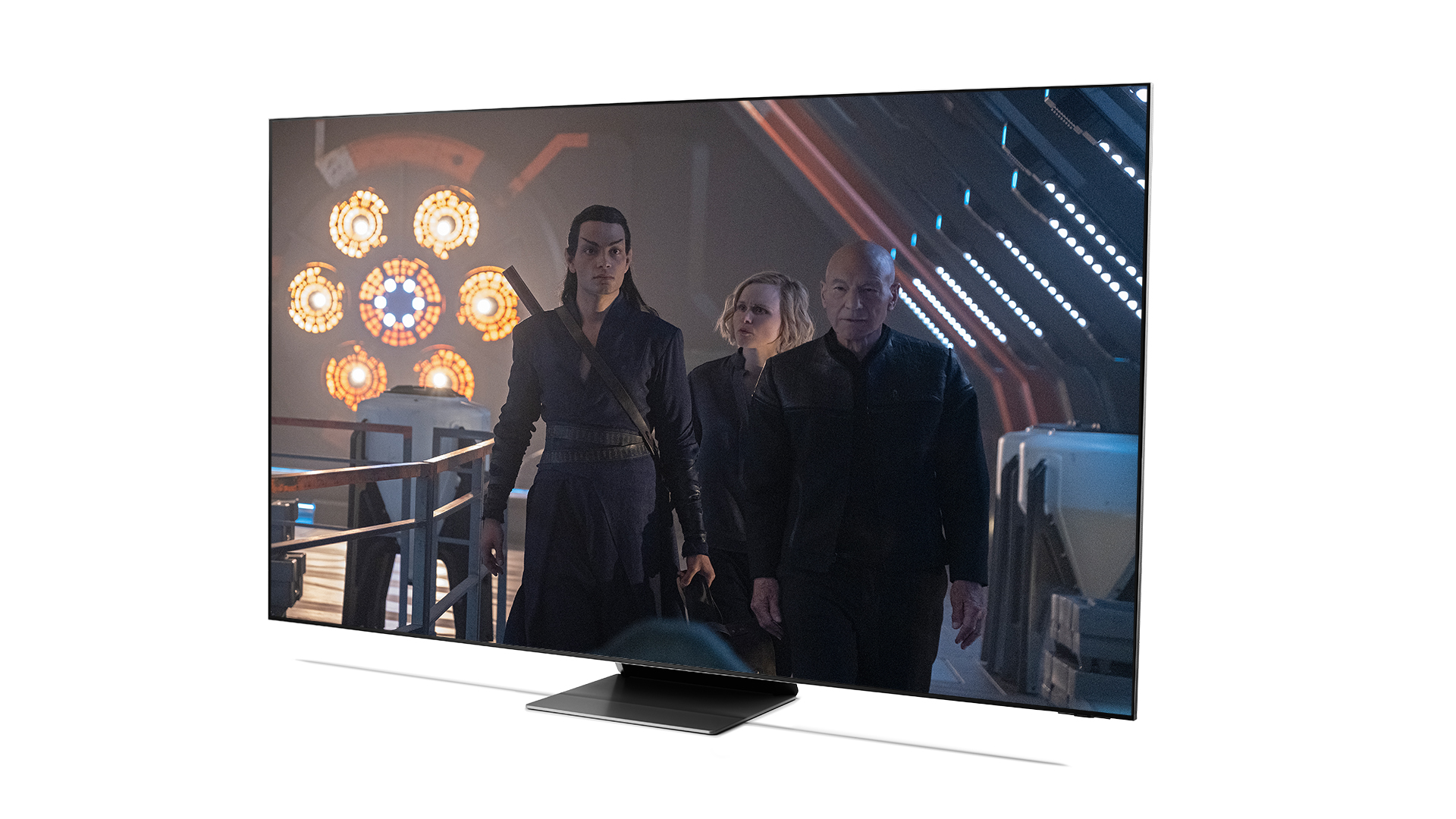
The higher the resolution of the source material we feed the Samsung QE75QN900A, the more obvious are the improvements over its 2020 predecessor, the Award-winning Samsung QE75Q950TS.
While 8K YouTube streams aren’t as high quality as we might get from a disc or local files, even watching Switzerland In 8K ULTRA HD HDR – Heaven Of Earth offers superb examples of what this TV can do. The QE75QN900A is quick to find the correct brightness levels and straight away serves up the kind of stunning detail and depth that makes us want to visit the spectacular on-screen landscapes.
As the camera flies through the valleys and reaches the mountains, the range of textures available in the snowcaps is quite magnificent. We’ve never seen anything like this level of shading skill, certainly at 8K. It’s almost worth buying this TV just to sit and watch the stock demo footage.
We drop down to 4K HDR with Blade Runner 2049 on Blu-ray for a more regular test for this TV. Once again, the results are jaw-dropping. This 2021 TV is so much better than previous 8Ks – the Mini LED backlighting and its wealth of dimming zones makes its predecessor look slow and clumsy in comparison. Pick an on-screen bulb or any close-up of the characters and the light levels are far better handled. Neon tubes and brake lights have better-defined borders and more complexity to their colours. Faces are lit with more care and subtlety and there are more realistic contours to every feature.
The scene with K in the police room draws us in. On lesser TVs, there’s not much to it – an off-white panelled cell; a dark grey floor, and a rather beaten looking K. On the Samsung QE75QN900A, it’s littered with examples of excellence.
The density of pixels and lighting control mean that the scene is shaded with expert detail. The wall tiles show a curvature and a finish that seems so much more real than we’ve seen before at this level. The floor is now revealed as more worn and trodden and produced with a fuller blackness than previous QLEDs could manage when rendered next to such large areas of bright white. Altogether, it gives this scene a brilliant three-dimensionality.
Given a 1080p source, an 8K TV has a lot of picture to make up and, as we drop down to Full HD with Guardians Of The Galaxy on Blu-ray, some of this TV’s genius is thwarted. Without so much native detail, the true crispness and punchiness of the picture is more blunted. Nonetheless, there’s still an excellent depth to the image as we see Peter Quill dance about the cave on Morag. Dark details are handled in a typically impressive manner for a QLED and there’s enough in the Mini LED contrast tank to bring a new shine to the oxblood leather of his Ravager garb.
When the action reaches Xandar, the planet’s foliage is vibrant and rich without being overcooked and skin complexions look realistic, even at Full HD, whether human, kree or Groot. Motion is handled equally well across all resolutions, with a tiny improvement in the Judder Reduction processor allowing us one more notch than we’d normally dare.
We check in with Sunshine on DVD to see how things look when this TV has to upscale and make up not far off 99 per cent of the picture. Colours, of course, become incredibly simplistic – it’s most easily noticeable in the plant lab scene. There’s not much detail on offer in the shadows and you have to go easy on the sharpness to stop them pixelating, but it doesn’t take long before we’re into the narrative and enjoying this tense space drama, meaning that it’s perfectly watchable at SD.
Sound
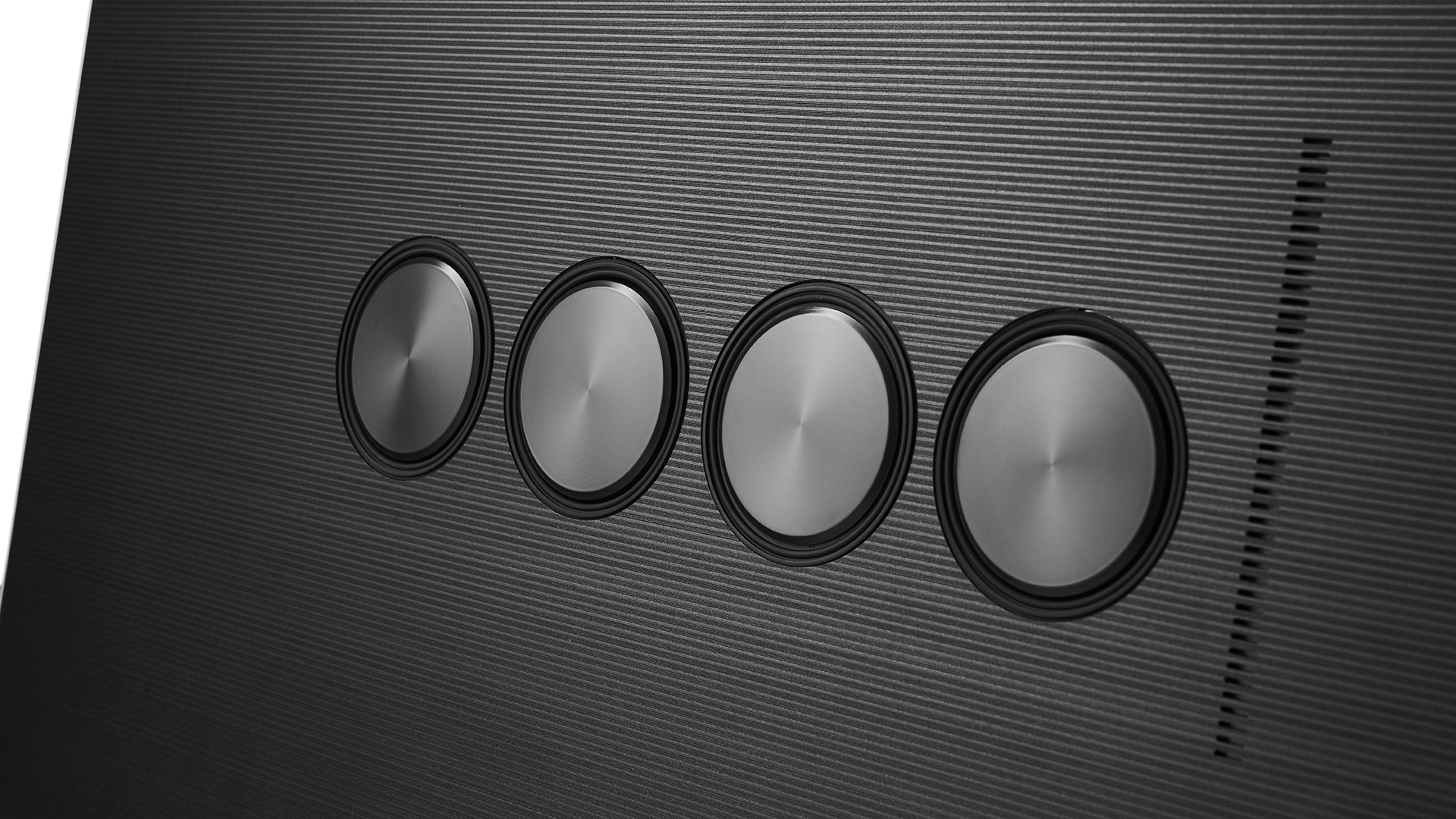
As Samsung’s top 8K TV this year, the QE75QN900A gets its best audio offering, known as Object Tracking Sound (OTS) Pro. It consists of a row of four mid/bass drivers at the bottom of the rear and two tweeters. Then there are two height speakers on the top of the set and a pair of side-firers in what Samsung claims as a 6.2.2 channel arrangement with 80W of amplification to back it up.
The idea of OTS Pro is to bring a Dolby Atmos-like spread of sound. These are increasingly big TVs to provide audio for and getting the sound out and around the panel to the listener becomes a tougher task. In practice, the soundstage is one of the best features of this set’s audio performance. As K’s police spinner flies over our heads in Blade Runner 2049, the audio doesn’t exactly envelope us, but there’s a breadth that extends far beyond the screen.
The bass isn’t perfect though, it’s still the more obvious part of the tonal range and on the fat side too. It adds good impact and gravity but it’s not precise enough to add much quality to the music or detail to the on-screen action. The spinner’s engines are a bit of a blur when they could offer some insight into the physicality of this machine.
That’s in line with Samsung’s 8Ks from last year, but there are notable improvements too. Dynamics are certainly better than before – this TV is more capable in quiet moments as well as the loud ones, and that makes the scene on the K’s apartment roof far more atmospheric. We’re nearer to hearing individual drops of rain than a general background splash and, while bass might still rule, the top notes are far less harsh than before.
It all makes for a fairly easy-going experience that is perfectly well-appointed and adept at making itself clear through action, dialogue and soundtrack.
Samsung’s audio settings don’t require much exploration. There are few and, ultimately, the EQ is best left flat. The Amplify sound mode is second best to Standard but handy if there’s a lot of environmental noise.
Samsung’s Q Symphony mode can partner your TV’s speakers with a Samsung soundbar, which is certainly an incentive. However, a top TV like this one deserves the best sound, so we’d recommend partnering it with a similarly high-end soundbar or speaker package.
Verdict
You don’t need 8K footage to prove the worth of an 8K TV, it’s about the panel size. Increasing the resolution ups the pixel density, meaning that this fabulous TV manages an awesome sense of scale but with a crispness of detail that we’d normally associate with a smaller 4K set.
Samsung has doubled down on 8K by adding Neo QLED backlighting and has created a set that’s impossible to ignore. For the first time, this is a super hi-res TV that we’d like to own. It’s consistent at scaling and so adept with contrast that it easily outperforms other 4K panels we’ve seen at the 75in size. We look forward to prices dropping and the technology becoming more widespread – 8K is ready whenever you are.
SCORES
- Picture 5
- Sound 4
- Feature 5
MORE:
Read our guide to the best 8K televisions
Read our Samsung QE75Q950TS review
Read our Sony KD-75ZH8 review
What Hi-Fi?, founded in 1976, is the world's leading independent guide to buying and owning hi-fi and home entertainment products. Our comprehensive tests help you buy the very best for your money, with our advice sections giving you step-by-step information on how to get even more from your music and movies. Everything is tested by our dedicated team of in-house reviewers in our custom-built test rooms in London, Reading and Bath. Our coveted five-star rating and Awards are recognised all over the world as the ultimate seal of approval, so you can buy with absolute confidence.
